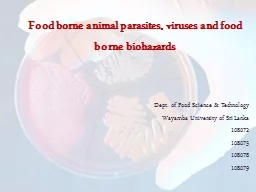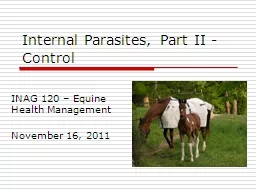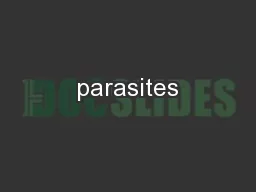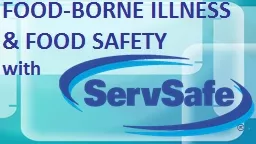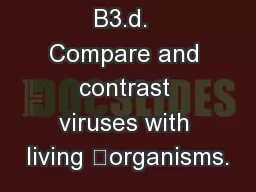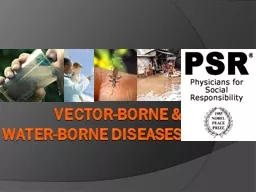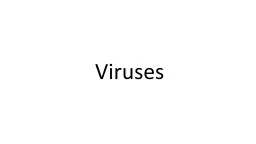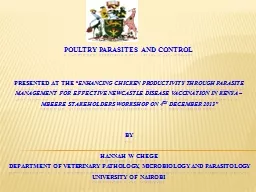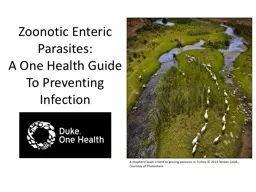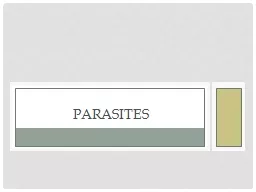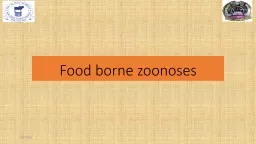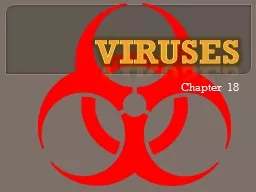PPT-Food borne animal parasites, viruses and food borne biohazards
Author : dorothy | Published Date : 2022-06-14
Dept of Food Science amp Technology Wayamba University of Sri Lanka 108072 108075 108078 108079 Food borne illnesses Parasites Viruses Biohazards toxins Bacteria
Presentation Embed Code
Download Presentation
Download Presentation The PPT/PDF document "Food borne animal parasites, viruses and..." is the property of its rightful owner. Permission is granted to download and print the materials on this website for personal, non-commercial use only, and to display it on your personal computer provided you do not modify the materials and that you retain all copyright notices contained in the materials. By downloading content from our website, you accept the terms of this agreement.
Food borne animal parasites, viruses and food borne biohazards: Transcript
Download Rules Of Document
"Food borne animal parasites, viruses and food borne biohazards"The content belongs to its owner. You may download and print it for personal use, without modification, and keep all copyright notices. By downloading, you agree to these terms.
Related Documents

